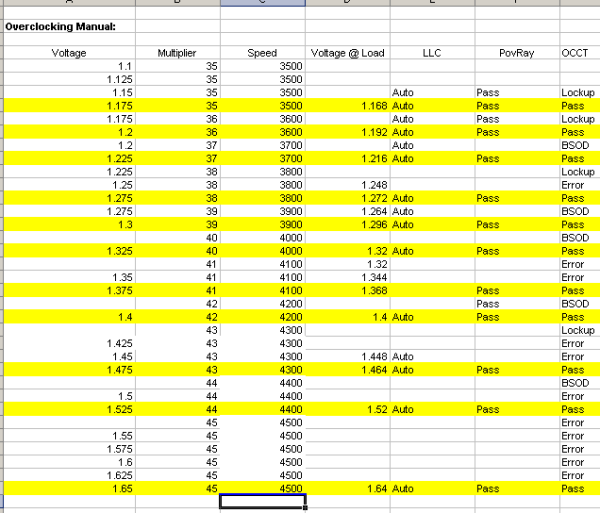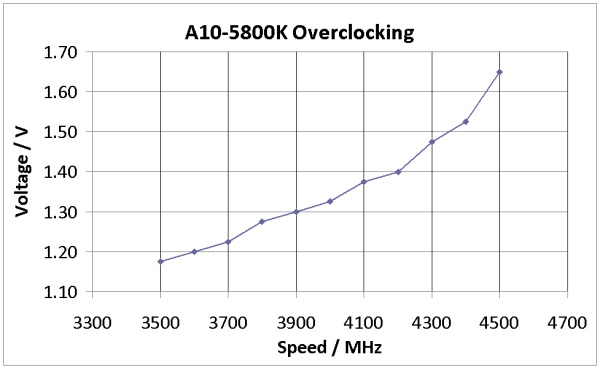ASUS F2A85-V Pro Review: A Look at FM2 with A85X
by Ian Cutress on October 10, 2012 11:20 AM EST- Posted in
- Motherboards
- Asus
- Trinity
- FM2
- A85X
ASUS F2A85-V Pro In The Box
What we get in the box usually is the cream of the package - something that little bit extra that makes the whole product a more enjoyable experience. Despite this, the price of the board usually indicates what level of goodies we get in the box, even if we have had a few surprises in the past. With this product selling for $140 at launch, more expensive than the high end Trinity processors, we should feel that there's something in the box to make it worth while. What we actually get in the box is:
Driver CD
IO Shield
User Manual
Four SATA Cables
Q-Connectors
The box could be a little more filled with joy - either a USB 3.0 panel or something similar. As mentioned before, I would have liked to see the ASUS WiFi/Bluetooth module on the 'Pro' board, which would have included antenna and the module in the box.
Voltage Readings
[retracted]
Unfortunately we are unable to bring you the results of our OCCT test, due to a level of incompatibility between OCCT and current FM2 boards we have discovered that was not correctly reading the voltage. This test in the future will require an OCCT update.
ASUS F2A85-V Pro Overclocking
Experience with ASUS F2A85-V Pro
Overclocking on a new platform is always a little frustrating – even if the principles of overclocking have not changed, or the architecture has not changed, a manufacturer may slightly confuse with different names for voltages, and there is no experience guiding how these processors may interact under voltage.
As such we have to take a methodical view to overclocking. For almost all 24/7 CPU overclocks all we ever need to adjust is the CPU multiplier and the CPU voltage, so starting with the load multiplier and voltage that comes with the processors is never a bad thing. In the case of our test bed we had an A10-5800K which has a maximum turbo multiplier of 42x and a load voltage of around 1.40 volts according to OCCT. Using this information I performed overclock testing starting at an underclock of 35x and attempted to find the minimum voltage needed to be set in the BIOS to make this stable. The system was then raised slowly with the multiplier, each time finding the minimum voltage required to be stable.
The third option that an overclocker may play with is Load Line Calibration. This adjusts the voltage drop across the processor when under load (as causing the processor to do work causes a droop in the voltage reading) – a low LLC uses less energy overall in the system and is often dictated in part by the processor manufacturer. However a high LLC often has the benefit of making an overclock stable. In the case of ASUS motherboards we get a variety of options for LLC, but for the purposes of testing here it was left on automatic.
The experience of overclocking on the F2A85-V Pro was fairly standard for a top tier motherboard – we get two automatic overclock options in the OS in the form of ‘Fast’ and ‘Extreme’, as well as one in the BIOS and the TPU switch on board which both perform the ‘Fast’ overclock. Manual overclock involves either playing with the AI Suite software until the system is unstable, then making permanent adjustments in the BIOS as required. Without comparing against other motherboards yet I cannot say how well this board performs relative to others, but having the temperature reading issue does not help much.
Methodology:
Our standard overclocking methodology is as follows. We select the automatic overclock options and test for stability with PovRay and OCCT to simulate high-end workloads. These stability tests aim to catch any immediate causes for memory or CPU errors.
For manual overclocks, based on the information gathered from previous testing, starts off at a nominal voltage and CPU multiplier, and the multiplier is increased until the stability tests are failed. The CPU voltage is increased gradually until the stability tests are passed, and the process repeated until the motherboard reduces the multiplier automatically (due to safety protocol) or the CPU temperature reaches a stupidly high level (100ºC+).
Our test bed is not in a case, which should push overclocks higher with fresher (cooler) air. We are using a beQuiet Dark Pro CPU cooler with its stock fan. This is a high-end air cooler, designed to tackle up to 150W of CPU power without issue.
Automatic Overclock:
Using the AI Suite software, we navigated to the TurboV Evo Automatic Tuning menu. It offers two options – ‘Fast’ and ‘Extreme’. Here are our results with these options.
With the ‘Fast’ option, the system rebooted indicating the CPU had been boosted to 43x and 100 MHz (4300 MHz total), with the IGP also boosted to 950 MHz. This overclock passed both OCCT and PovRay.
With the ‘Extreme’ option the system rebooted and initialized stress testing with the processor. The software started adjusting the CPU multiplier in the OS, rebooted then adjusted the APU frequency. When all was said and done, the final result was a CPU overclock to 44x and 100 MHz (4400 MHz total), with the IGP also boosted to 1013 MHz. This overclock passed PovRay but led to CPU errors in OCCT.
Manual Overclock:
With the manual overclock we left LLC on automatic, started at a CPU voltage of 1.1 volts and multiplier of 35x. On a failed boot or unstable system, the voltage was raised by +0.025 and retested. If a settings passed both PovRay and OCCT then the multiplier was raised. To show the tests going into this, here is a direct screenshot from my results file:
The best way to represent these results is with the following graph:
At 4.5 GHz I was unwilling to go much further without any clear indication of the temperature of the processor. Every setting would give a max reading of ~62C. Judging by the results of overclockers online, these processors on air could potentially go up to 5.1 GHz with the correct settings or a better processor – I have seen 4.8 GHz on 1.50 volts stable enough to run simple benchmarks. Overclocking a processor is like opening a packet of chocolate chip cookies – some cookies have a lot of chocolate chips and some have none. You hope the cookie you get is full of chocolate chips. In this case, I may have one without any. If I took this result in isolation, I would say that AMD are really pushing these chips to the limit on clock speed – getting 300 MHz more than stock is not representative of recent processor releases.












66 Comments
View All Comments
andykins - Wednesday, October 10, 2012 - link
A 2500k fits into socket 1155, not 1156 - the latter is Nehalem I believe?Old_Fogie_Late_Bloomer - Wednesday, October 10, 2012 - link
Likewise, the features chart on the first page lists PCIe 3.0 slots...Trinity has PCIe 2.0...IanCutress - Wednesday, October 10, 2012 - link
Apologies - first one was a brain fart, second was carry over. Tables like that I have to write in HTML (via excel) then copy paste in. Somehow got a weird mishmash of the last review and the new one.Ian
Kevin G - Wednesday, October 10, 2012 - link
First page, second paragraph:"Thus if I purchase an i7-3960X today, I know that it will fit into Socket 2011 based motherboards - similarly with the i5-2500K, it will fit into Socket 1156 motherboards. "
The i5-2500K fits into socket 1155.
Anonymous Blowhard - Wednesday, October 10, 2012 - link
> This full sized ATX board is aiming for the enthusiast in the Trinity space> enthusiast in the Trinity space
> enthusiast
> Trinity
Nope
djshortsleeve - Wednesday, October 10, 2012 - link
Well, AMD fanboi enthusiast maybejust4U - Wednesday, October 10, 2012 - link
I am not AMD fanboi but I am a fan of new computer hardware. As such I tend to grab some of the latest stuff. The thing about AMD boards (that I've noticed) is to get something comparable from Intel your usually looking at 30-50 more. Their boards are feature rich at a lower premium.This board in particular, (and Gigabyte's alternative) is over priced. I'd say by 20 bucks. But it's new hardware, slight price premium.. I expect in coming months this board will be 110-120 and the CPU it's paired with will drop to in and around the same price.
CeriseCogburn - Saturday, October 13, 2012 - link
LOL - caught again, and still in public denial.The gaming benchmark page is a shame to the human race and all reporters worldwide, but that's how amd corpo pig pressure rolls.
medi01 - Sunday, October 14, 2012 - link
Do you at least get payed by Intel?Utterly stupid to post so much shit for them for free...
darcotech - Thursday, October 11, 2012 - link
I totally agree.I consider myself more leaning toward AMD,but Trinity has no place in enthusiast world.
It was made as low to medium all-in-one (cheap) solution and as such, it works great.
Why would anyone put mid-high end GPU with trinity is beyond my imagination.
Even if you say you start with Trinity, then add G-card doesn't hold the true, because your CPU performance will suffer.Better start with strong CPU (probably Intel) and basic graphics card, and then later add something much stronger.At the end,you will have strong system.
150USD for Trinity oriented motherboard is not overkill.It is plain stupid.